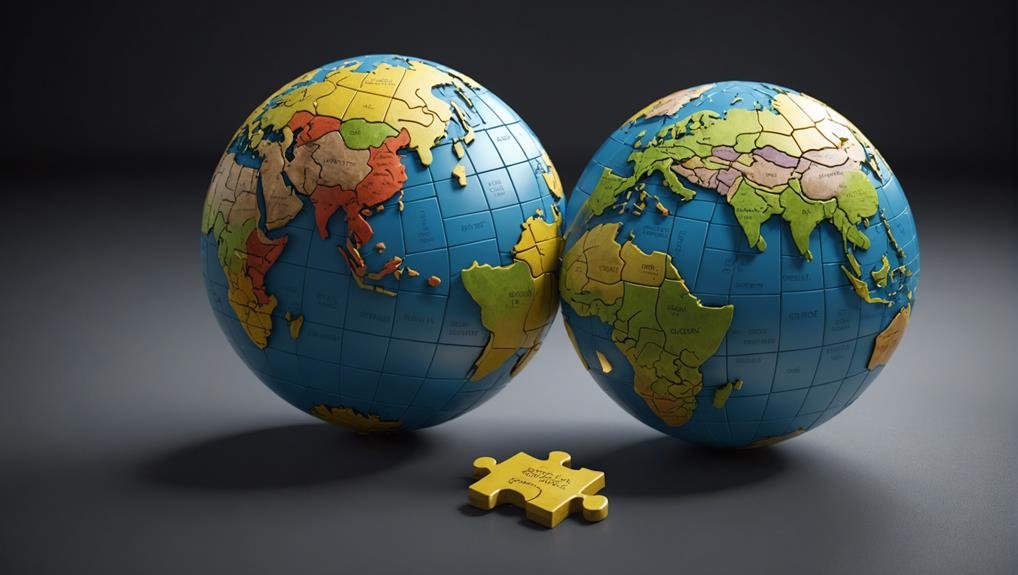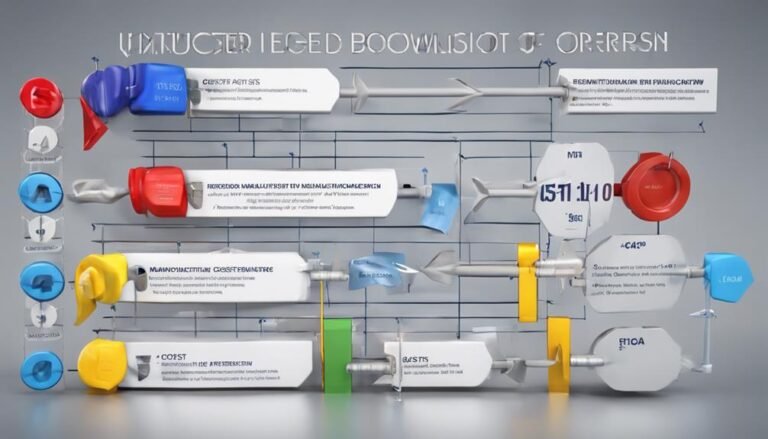Economic Integration Definition and Real World Example
Economic integration is a strategic process to decrease trade barriers and enhance cross-border trade, leading to increased economic efficiency and growth. This fosters trade opportunities and job creation. One concrete real-world example of economic integration is the European Union (EU) which evolved from a preferential trading area to a customs union and now operates as a common market. Understanding the stages, advantages, and challenges of economic integration provides valuable insights into its impacts on economies and societies.
Key Takeaways
- Economic integration reduces trade barriers and enhances cooperation to create trade opportunities.
- It lowers costs, boosts economic growth, and improves the availability of goods and services.
- Challenges include trade diversion, sovereignty erosion, and employment shifts.
- Stages progress from preferential trading areas to economic and monetary unions.
- The European Union (EU) exemplifies economic integration, showcasing benefits and complexities.
Definition of Economic Integration
Economic integration is a strategic process aimed at reducing or eliminating trade barriers between countries to enhance cross-border trade and economic cooperation. The benefits of economic integration include the creation of trade opportunities, job openings, consensus, and cooperation. By lowering trade costs and enhancing the availability of goods and services, economic integration can lead to increased economic growth and efficiency.
However, challenges such as trade diversion, erosion of national sovereignty, employment shifts, and the need to comply with external regulations can arise. Additionally, there is a risk of production relocation. These factors highlight the importance of carefully weighing the advantages and disadvantages of economic integration to secure sustainable and mutually beneficial outcomes for all participating countries.
Stages of Economic Integration
The progression through stages of economic integration delineates the evolving depth of inter-country trade relations and policy alignment. Starting with preferential trading areas, countries gradually advance to free trade areas, customs unions, common markets, and ultimately economic and monetary unions.
Each stage involves deeper regional agreements and increased policy coordination among member states. As countries move towards complete economic integration, such as the European Union, the level of coordination extends to monetary and fiscal policies. This progression aims to reduce trade barriers, enhance trade flows, and foster economic cooperation.
However, challenges may arise, including concerns over sovereignty and shifts in employment patterns. Understanding these stages is essential for policymakers grappling with the complexities of regional economic integration.
Advantages and Costs of Economic Integration
Moving towards complete economic integration involves a careful assessment of the advantages and costs associated with fostering deeper regional trade relations and policy alignment. Advantages include trade creation, leading to increased market access and economic growth. Employment opportunities can arise from enhanced trade activities, promoting job creation. Consensus and cooperation among integrated nations can lead to political stability and mutual benefits. Additionally, reducing trade costs and improving the availability of goods and services are significant advantages.
On the other hand, the costs of economic integration may involve the diversion of trade from non-member countries, potentially affecting global trade dynamics. Sovereignty concerns, such as the erosion of national autonomy due to adherence to external rules, can be a significant drawback. Additionally, employment shifts and production relocations may occur as industries adjust to integrated markets.
Conclusion
To sum up, economic integration is a multifaceted process that holds the potential to drive economic growth and foster cooperation among nations.
While it offers various advantages such as increased market access and trade creation, there are also costs and challenges associated with such agreements.
Like a puzzle coming together piece by piece, economic integration requires careful coordination and collaboration among nations to achieve its full potential and reap the benefits of a more interconnected global economy.







